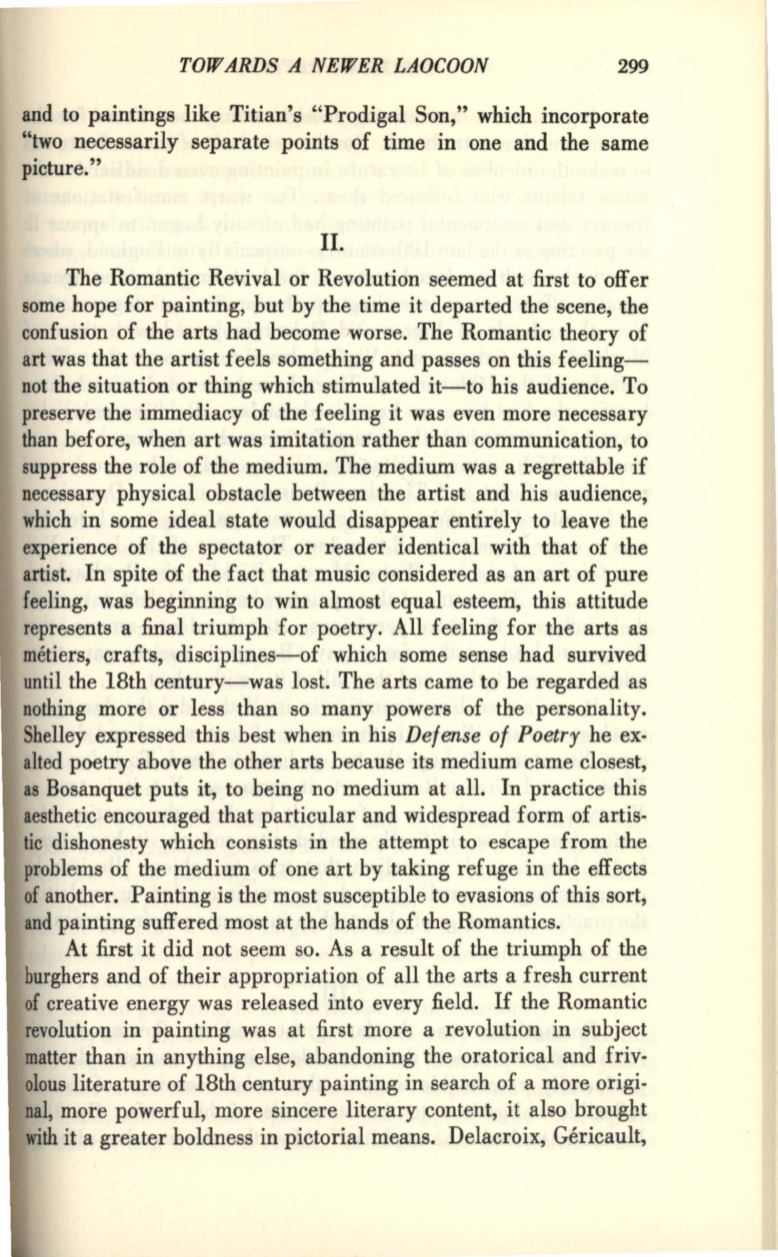
TOWARDS A NEWER LAOCOON
299
and to paintings like Titian's "Prodigal Son," which incorporate
"two necessarily separate points of time in one and the same
picture."
II.
The Romantic Revival or Revolution seemed at first to offer
some hope for painting, but by the time it departed the scene, the
confusion of the arts had become worse. The Romantic theory of
art was that the artist feels something and passes on this feeling–
not the situation or thing which stimulated it-to his audience. To
preserve the immediacy of the feeling it was even more necessary
than before, when art was imitation rather than communication, to
suppress the role of the medium. The medium was a regrettable if
necessary physical obstacle between the artist and his audience,
which in some ideal state would disappear entirely to leave the
experience of the spectator or reader identical with that of the
artist. In spite of the fact that music considered as an art of pure
feeling, was beginning to win almost equal esteem, this attitude
represents a final triumph for poetry. All feeling for the arts as
metiers, crafts, disciplines-of which some sense had survived
until the 18th century-was lost. The arts came to be regarded as
nothing more or less than so many powers of the personality.
Shelley expressed this best when in his
Defense of Poetry
he ex–
alted poetry above the other arts because its medium came closest,
as Bosanquet puts it, to being no medium at all. In practice this
aesthetic encouraged that particular and widespread form of artis–
tic dishonesty which consists in the attempt to escape from the
problems of the medium of one art by taking refuge in the effects
of another. Painting is the most susceptible to evasions of this sort,
and painting suffered most at the hands of the Romantics.
At first it did not seem so. As a result of the triumph of the
burghers and of their appropriation of all the arts a fresh current
of creative energy was released into every field.
If
the Romantic
revolution in painting was at first more a revolution in subject
matter than in anything else, abandoning the oratorical and friv–
olous literature of 18th century painting in search of a more origi–
nal, more powerful, more sincere literary content, it also brought
with it a greater boldness in pictorial means. Delacroix, Gericault,


